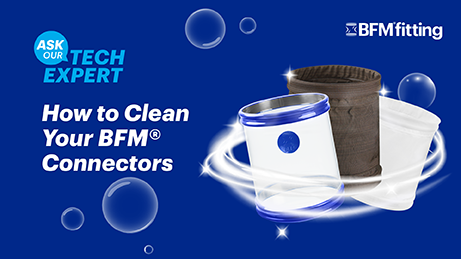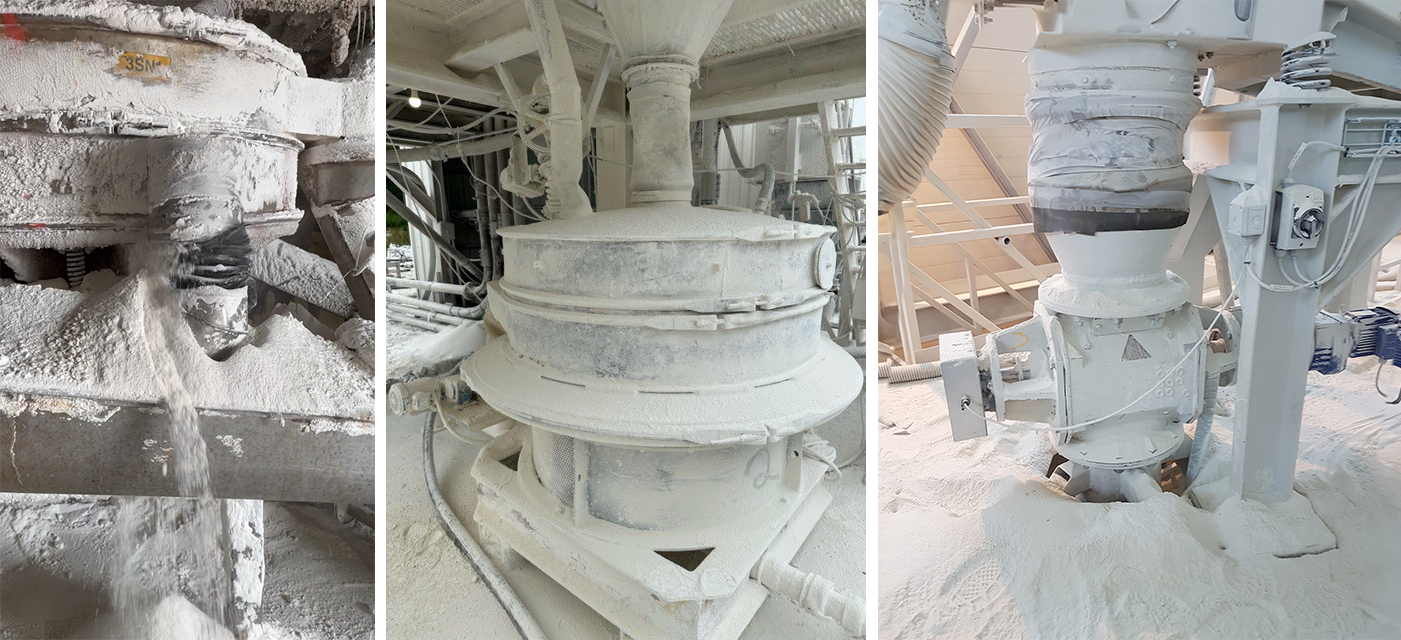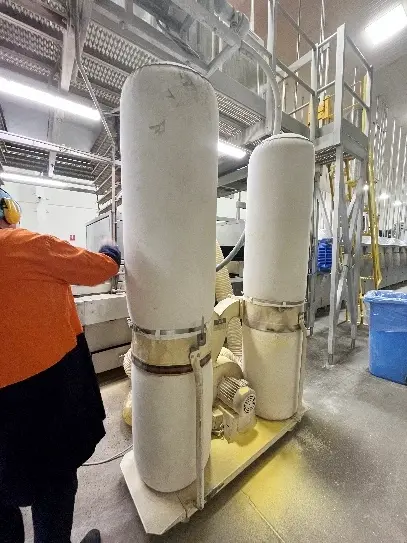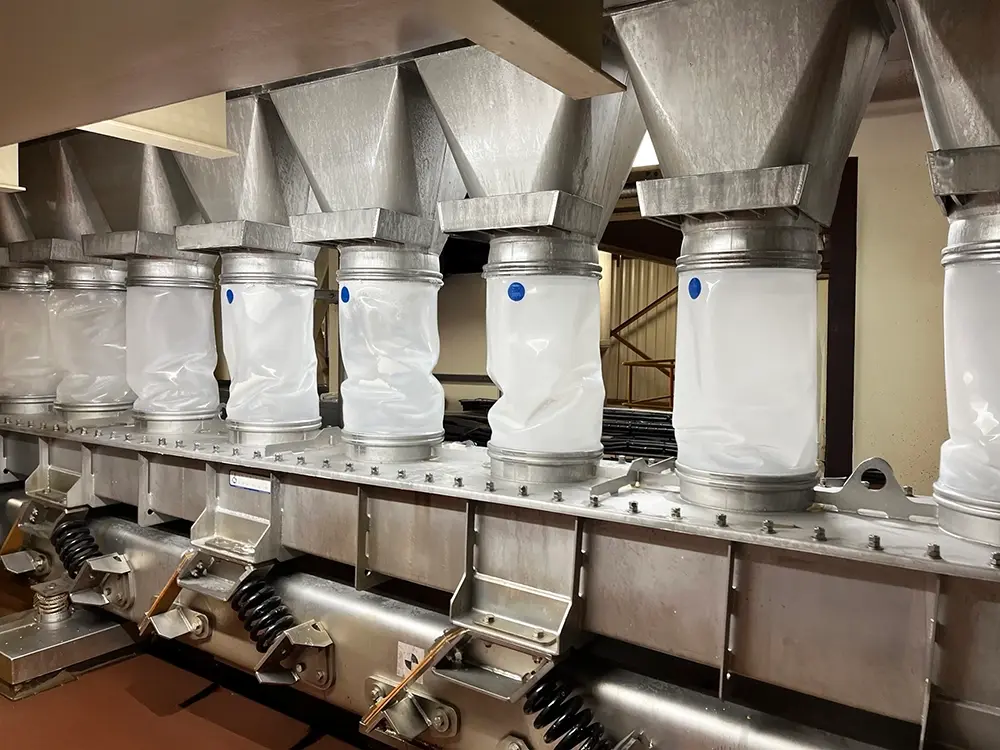
Keeping product flowing freely is fundamental to any quality flexible connector system used in a bulk processing application. However, the connector's flexibility also means that there are certain operating conditions and applications where additional support is required to help keep it operating at its maximum capability.
That additional support comes in the form of rings, and here's a quick guide to what they are, how and where you would use them:
What are Anti-Collapse or Support Rings?
Anti-collapse or support rings are stainless steel or plastic rings that can be embedded into the walls of most BFM® fitting connectors to help keep the connector walls open, particularly when they are being used under negative pressure (vacuum) or are longer in length. They can also help support the connector's shape when it is used in high-pressure applications or compression applications, like bag loaders, by keeping the connector open when it is compressed.


Plastic rings are often used in conjunction with metal detectors as they don't interfere with the metal detector's operation. Also, there is some degree of 'flex' in the plastic ring, which allows manual compression to assist in feeding the connector and ring through the metal detector when fitting the connector in place and when removing it for cleaning.
Stainless Steel (SS) support rings can be inserted into connectors up to Ø500mm (20") in diameter, but above that size, they must be plastic support rings. Plastic support rings can be installed up to the maximum diameter of our BFM® connector range which is Ø1,650mm (65" ).
Both types of rings are attached to the outside of the connector and fully encased inside a band of connector material so they don't come in contact with the product itself at any stage. Rings can also be used in ATEX zones with minimal restrictions - you can find more on the ATEX ratings of our products here.
How Many Rings Should You Have In A Connector?
The longer a connector is, the more chance there is that the walls of the connector can 'collapse' or 'suck' inwards, particularly if there is vacuum or movement involved. Installing support rings along the length of longer connectors helps ensure that the connector's maximum diameter (or aperture) remains open for product flow at all times.
You can basically decide to have as many rings as you think is necessary. However, the minimum distance between rings is usually 100mm (4 inches), and the maximum number of rings that can be inserted in any standard Seeflex connector is 10.
Other materials may have slightly different manufacturing limitations when incorporating rings, so we recommend referring to our Quick Reference Limitations document for more information.



Do You Always Need Support Rings In Vacuum Applications?
This illustration below demonstrates how the addition of rings and Tool Release cuffs negate the effect of vacuum on connectors:

Why Would You Use Support Rings with Positive Pressure?

Adding rings to a connector creates an additional point of resistance, essentially making it stronger. This applies to both negative and positive pressure.
When used in positive-pressure applications, rings prevent the connector's wall from being pushed outwards and expanding (in a similar way to the inward resistance they provide against suction under vacuum). This means you can operate a connector with rings at higher positive pressure than you could without support rings.
How Do Support Rings Help In Compression Applications?


Because of their secure seal and flexibility, BFM® fittings are often used in applications involving compression. This is typically in applications such as bag feeders, filling heads or bulk bag fillers where the upper machine moves in a vertical motion up and down, compressing the connector as it moves down.
The compression tends to fold the connector material randomly, potentially causing faster wear and tear than normal. Therefore, it is recommended that connectors used in compression applications have internal support to maintain their shape.
Rings are useful when a connector must be compressed, as they help keep the connector's diameter open and prevent the connector material from folding unevenly.
An alternative to connectors with rings for this type of application is our Flexi Connector range, which has an embedded steel coil throughout the whole length of the connector..



